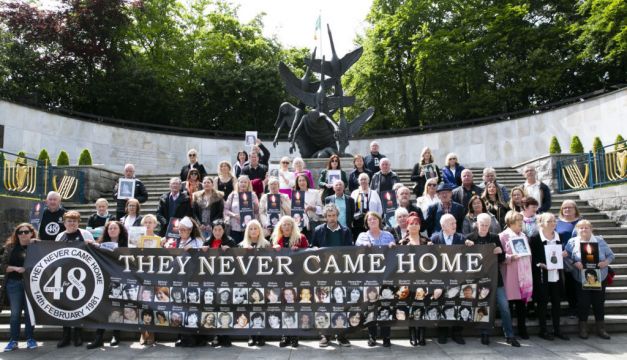One of the fire extinguishers in the Stardust was empty every time it was inspected in the three years before the blaze, an inquest has heard.
The jury at the Dublin District Coroner’s Court in the Pillar Room of the Rotunda Hospital on Wednesday heard evidence from Henry Armstrong, who was employed by Chubb Fire & Security Ireland Limited.
Mr Armstrong said he had carried out a survey of the Stardust in October 1980, which was just months before the fire that killed 48 people when it swept through the Stardust premises in the early hours of February 14th, 1981.
He said during his survey, he found eight fire extinguishers that dispensed water, five in good working order and three empty, which he refilled. There were six CO2 gas extinguishers, three in good working order and three empty, which he refilled.
Mr Armstrong confirmed that when he left the Stardust in October 1980, the extinguishers were fully filled and functioning.
“We had no fire safety standards in Ireland at the time of the Stardust fire, so it was based on the British standards, but now we have the best standard in all of Europe,” said Mr Armstrong. He said that at the time of the Stardust fire, some of the extinguishers were five feet off the floor, but this is not the standard anymore.
Brenda Cambell KC, acting on behalf of the families of nine of the deceased, asked Mr Armstrong who had decided where the extinguishers were to be located. He replied that a previous sales representative with his company would have told the management the best location to put them.
Fire extinguisher
Mr Armstrong said that he checked back over the records for the three years before that, and that extinguisher was empty every time he went there.
“It was in the hall outside the kitchen. The chef would use it if there was a small flash fire and put it back on the wall. Each time I went there, that one was empty,” he said.
Ms Campbell said that one of the features of the club was if numbers were not great on a given night, sections could be partitioned by blinds that were drawn down.
“Four of the fire extinguishers become invisible when the curtain is down,” she said. “Did anyone ever discuss with you when servicing that on a night four of them might be invisible and inaccessible?”
“No, it was never said to me. If it was said to me, I would have suggested they move them forward,” replied Mr Armstrong.
Mr Armstrong went on to confirm that at that time, it was the responsibility of the people who owned and ran the premises to train staff in the use of fire safety equipment.
The jury also heard a statement by Diarmaid H King, a senior building surveyor with the Dublin Corporation planning department. In the statement, which was read out by Simon Mills SC, Mr King said he had no knowledge of when steel bars and plates were fixed to the toilet windows in the Stardust, but he said that the windows were not considered a suitable means of escape.
“I considered the number of exit doors was more than ample as a means of escape,” he said.
The statement was made by Mr King during a previous tribunal into the Stardust fire, and he was asked by a barrister at that time about an inspection of the Stardust on January 15th 1981, in which it was noted that an exit passageway at the side of the stage was obstructed and there was overcrowding in the cabaret room.
Mr King confirmed that this constituted “a very serious infringement of the bylaws”.
A reply to these concerns was sent to the planning department by Stardust management represented by Eamon Butterly, who said the back exit had been cleared. Mr Butterly said that tickets had been forged for the show on that night in January, which accounted for the number of people present.
Mr King went on to say that he had no idea that exit doors were being kept locked for up to two hours during performances at the Stardust.
Evidence was also given by Fiacre Mulholland, who was a sales rep with Cape Insulation Limited at the time. He said that polystyrene insulation was most likely the cause of the ceiling dripping during the fire.
He confirmed that when ignited, polystyrene can melt and fall. He also said that it has a low flash point and burns quickly. Mr Mulholland went on to say that such insulation would not be used today above a nightclub.
And evidence was also heard from Tom Malone, a director of the joinery company who supplied the external fire escape doors and frames for the Stardust. He said that the doors were on cranked hinges to obtain a clear opening to 180 degrees as required by the fire regulations. The doors were designed to open outwards only.
Mr Malone told Michael O’Higgins SC, representing a number of the families, that he made the doors but did not fit them. He said there were no keyed locks on these doors due to fire regulations.

Mr O’Higgins said that the doors were examined after the fire and two were found to have been impeded. He said the right-hand door of one exit could not open because there was a store outside.
“It had to be poorly fitted then, we didn’t fit the doors,” said Mr Malone, going on to say that he was not aware of the store.
He went on to confirm that the door was unable to be opened flush to the wall in the event of an emergency.
*This article was amended at 4.15pm on June 8th, 2023







